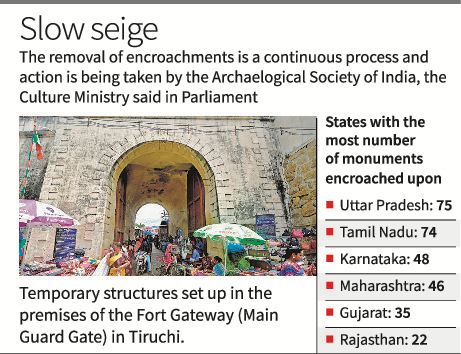Free Courses Sale ends Soon, Get It Now


Free Courses Sale ends Soon, Get It Now



Copyright infringement is not intended
Context: A total of 356 heritage structures have encroachments across the country, Tourism and Culture Minister Kishan Reddy told the Rajya Sabha.
Details:
Ancient Monuments and Archaeological Sites and Remains (AMASR) Act 1958:
https://epaper.thehindu.com/Home/ShareArticle?OrgId=GK3AM06QE.1&imageview=0
© 2024 iasgyan. All right reserved